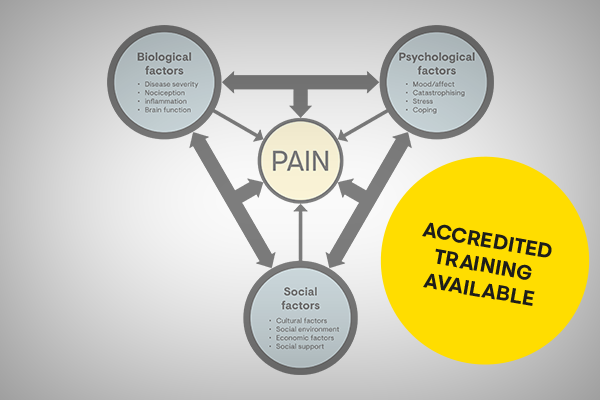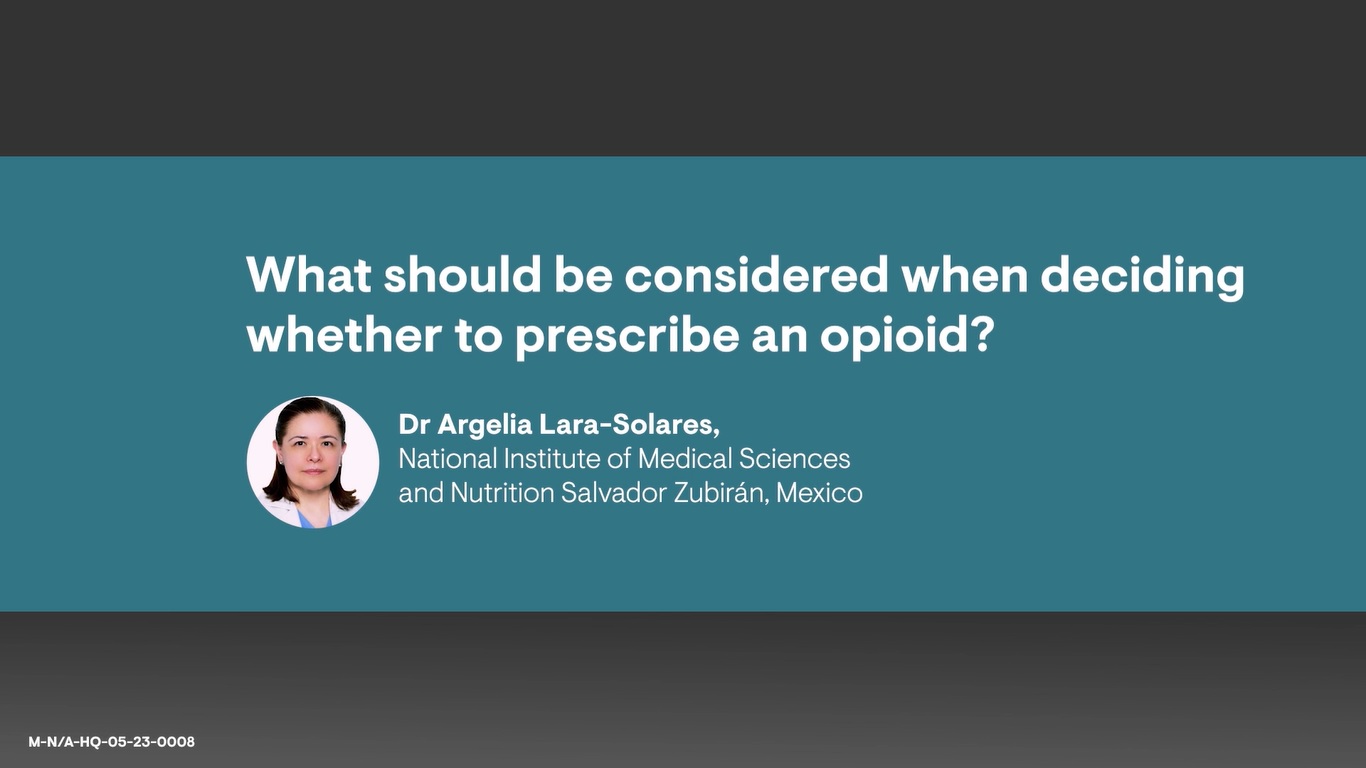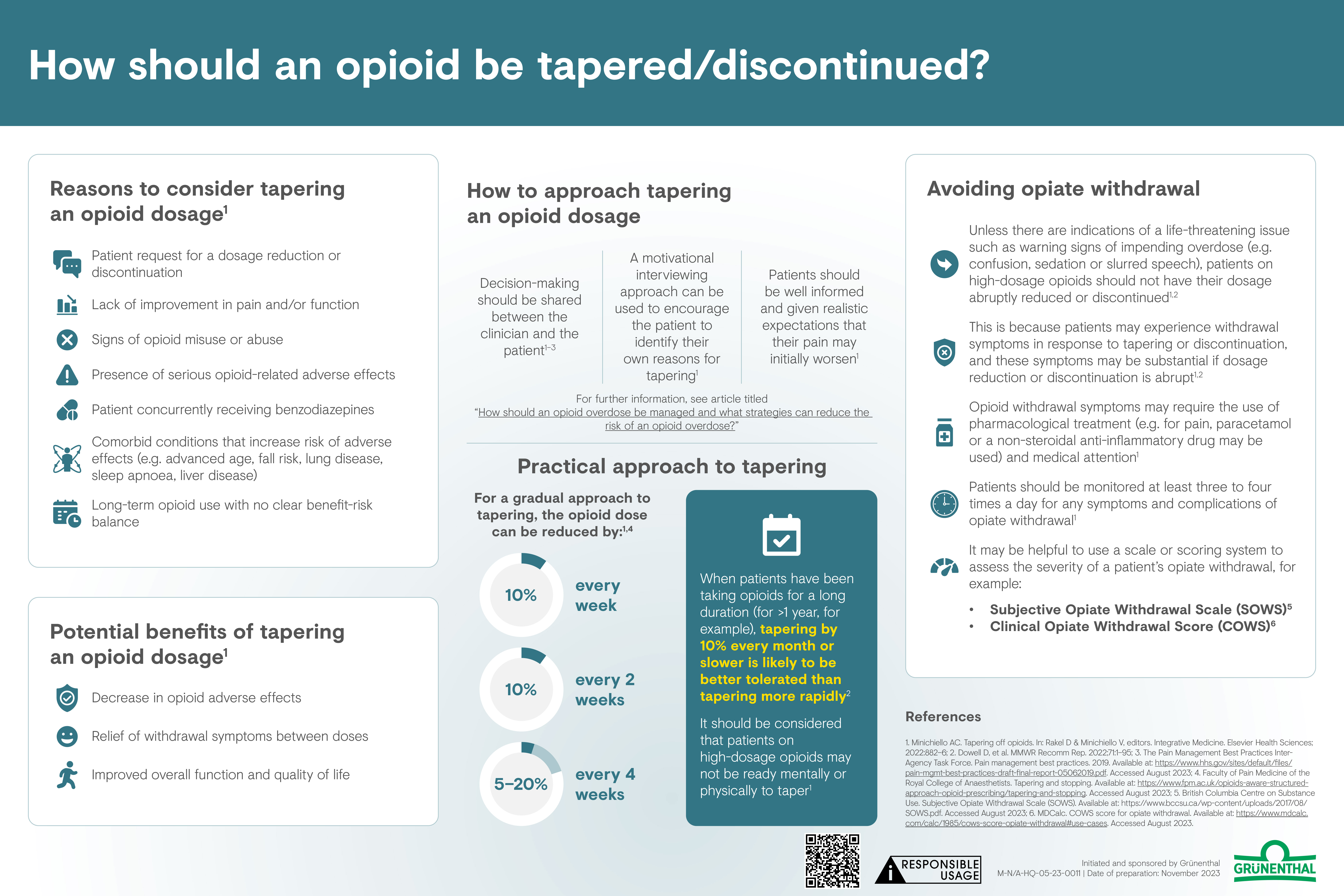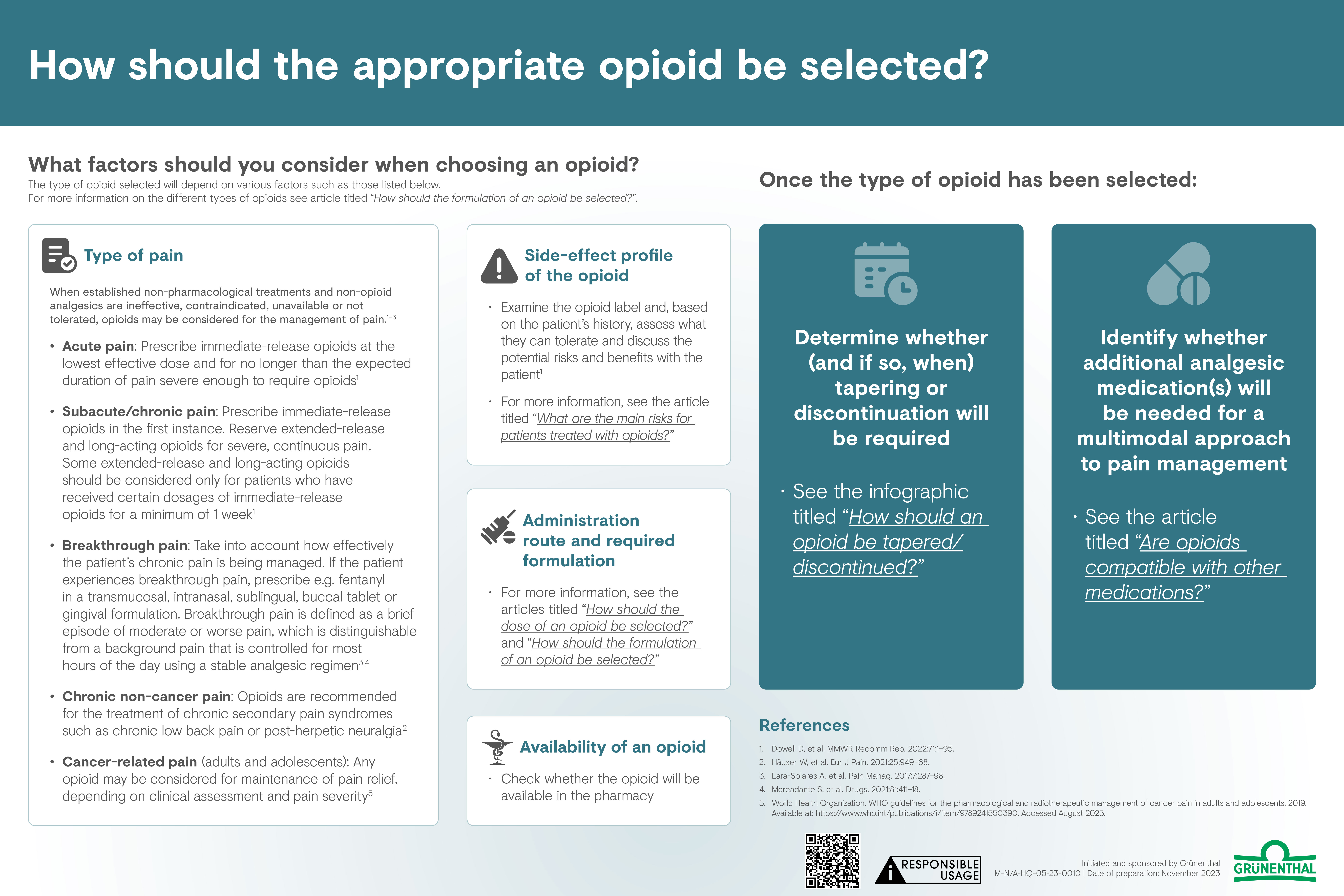
Pain Management
Managing pain responsibly
Are anti-depressant and anti-convulsants compatible with other pain medications?
In this article, you can learn more about drug interaction and risk associated with combining medication for neuropathic pain management.

Are NSAIDs compatible with other pain medications/analgesics?
In this article, you can learn about which pain medications can and cannot be used with non-steroidal anti-inflammatory drugs (NSAIDs).

Can paracetamol (acetaminophen) / metamizole (dipyrone) be used with other pain medications?
In this article, you can learn about which pain medications can and cannot be used with paracetamol and metamizole.

How do I choose the right analgesic?
In this article, you can learn more about what to consider when choosing an analgesic.
How do you choose between a non-selective NSAID vs a COX-2 inhibitor for your patient?
In this video, you can learn more about how to choose between a non-selective non-steroidal anti-inflammatory drug (NSAID) vs a cyclooxygenase-2 (COX-2) inhibitor.
How should an NSAID be prescribed?
Learn about key considerations for patients and physicians when discussing the optimal use of NSAIDs.
How should paracetamol/metamizole be prescribed?
In this article, you can learn more about how to prescribe paracetamol and metamizole.

How should triptans be prescribed?
In this article, you can learn more about risks/cautions/contraindications associated with anti-convulsants and anti-depressants for the management of pain.

How to decide between prescribing an anti-depressant or an anti-convulsant for the next step in the management of patient’s pain?
In this article, you can learn more about factors in the choice between anti-convulsant and anti-depressant for the management of pain.

How to talk to your patient when prescribing a medication for the management of pain?
In this article, you can learn more about how to communicate with patients while prescribing any medication for pain.

Optimising patient–physician communication
In this article, you can find out more about the challenges in patient–physician communication regarding pain.

Should an NSAID be prescribed with a gastroprotective agent?
In this article, you can learn more about when to use a gastroprotective agent with an NSAID.

What is the biopsychosocial model of chronic pain?
In this article, you can learn about the biopsychosocial model of chronic pain.

What are the differences in THC and CBD, cannabinoids, medical cannabis and cannabis-based medicines?
In this article, you can learn more about THC, CBD and their potential risks and benefits
What are the main risks, cautions and contraindications when using NSAIDs?
On this page, you can download an infographic with information about the main risks, cautions and contraindications to consider when using NSAIDs
What are the main risks, cautions and contraindications when using paracetamol (acetaminophen) / metamizole (dipyrone)?
In the following two short videos, you will learn more about the key risks, cautions and contraindications associated with the use of paracetamol and metamizole.
What are the main risks/cautions/contraindications when using anti-depressants and anti-convulsants?
In this article, you can learn more about risks/cautions/contraindications associated with anti-convulsants and anti-depressants for the management of pain.

What are the mains risks of using triptans?
In this article, you can learn more about risks/cautions/contraindications associated with anti-convulsants and anti-depressants for the management of pain.

What are the roles of non-pharmacological options in pain management?
In this article, you can learn about importance of non-pharmacological options in pain management.

What is pain?
In this article, you can learn more about pain and discover educational resources about key pain conditions.

What is the role of muscle relaxants in pain management?
In this article, you can learn about the potential role(s) of muscle relaxants in pain management

When might it be necessary to start prevention/treatment with CGRP
In this article, you can learn more about the preventive and acute treatment regime for migrane

When to consider using a triptan?
In this article, you can learn more about triptans, variability in patient response to triptans and individualized treatment of acute migraine

When to consider using an adjuvant (anti-depressant or anti-convulsant) for the management of pain?
In this article, you can learn more about adjuvant analgesic for pain management

When to consider using an NSAID
In this article, you can learn more about when to consider prescribing an NSAID.

When to consider using paracetamol (acetaminophen) or metamizole (dipyrone)
On this page, you can download an infographic with a brief guide on when to consider using paracetamol or metamizole.

Which anti-depressant or anti-convulsant can be used for the management of pain?
In this article, you can learn more about anti-convulsant and anti-depressant as a first line drug for the management of pain.

Are opioids compatible with other pain medications?
In this article, you can learn about the compatibility of opioids with other medications.

For how long should an opioid be prescribed?
In this article, you can learn about the recommended duration of treatment with an opioid and factors that can influence duration of treatment.

How can the formulation of an opioid be selected?
In this article, you can learn about different opioid formulations and how to select an appropriate formulation for a particular patient.

What is the role of cannabinoids in the treatment of chronic pain?
In this article, you can learn more about the potential roles of cannabinoids in managing
chronic pain
chronic pain

What should you consider when deciding whether to prescribe an opioid?
This video can help you to recognise when you should consider treating with an opioid and how to determine whether an opioid is appropriate for an individual patient.

How should an opioid overdose be prevented and managed?
In this article, you can learn about ways to reduce the risk of opioid overdose, management when an opioid overdose occurs and how to recognise potential symptoms of overdose.

How should a patient's suitability for opioid treatment be assessed?
In this video, you can learn how to decide whether a patient is suitable for an opioid.

How should an opioid be tapered/discontinued?
On this page, you can download an infographic that presents information on how to taper and/or discontinue an opioid.

How should the appropriate opioid be selected?
On this page, you can download an infographic that presents information on the factors to consider when choosing an opioid for your patient.

How should the dose of an opioid be selected?
In this article, you can learn more about how to choose the optimal dose when prescribing an opioid.

What are opioid dose equivalents?
In this article, you can learn more about opioid dose equivalents.

What are the main risks for patients treated with opioids?
In this article, you can learn about the serious adverse effects, common side effects and other risks that accompany opioid use.

Meet the experts
The Pain Management Hub has been developed to support and raise awareness among primary care physicians regarding the responsible use of pain medication. This educational content has been developed in close collaboration with a multidisciplinary group of experts – each a healthcare professional involved in the management of patients with pain (see below) – and is based on their personal clinical experience as well as published literature.
Disclaimers
Please be aware:
- Prescribing information in various geographies may differ and therefore you may be exposed to information that is outside the licensed label for your region. For up-to-date information on medicinal agents in the country where you are practicing, please refer to country-specific product information.
- Prescription of any medication is at the sole discretion of the treating physician, who should consider all the characteristics and needs of the individual patient, with due regard for any local treatment guidelines.
- Note that articles shared here may include links to third-party websites, services or content. Your browsing and interactions on any other websites, or your dealings with any other third party service provider, is subject to that website’s or third party service provider’s own rules and policies. We encourage you to consult the privacy statements of the providers whose services and/or content we link to and who are responsible for the content provided and the protection of your data in this context. Grünenthal does not monitor, control or endorse the privacy practices of any third parties. Please refer to our privacy statement for more information.











